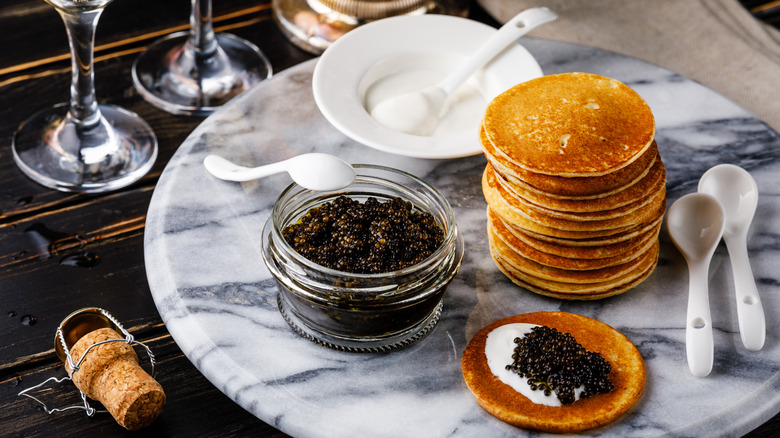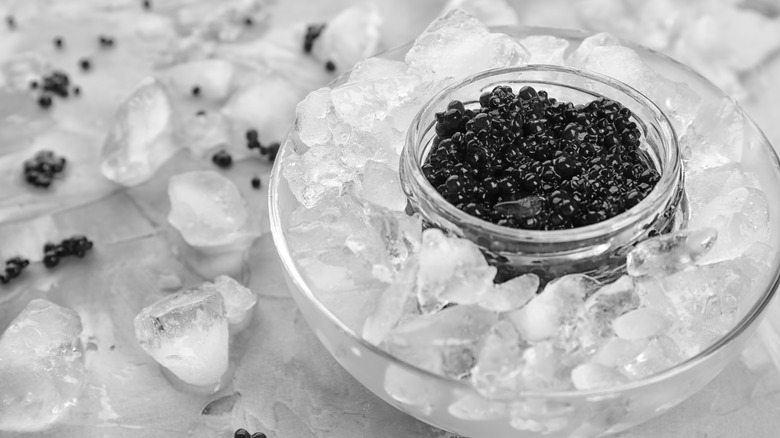Why You Shouldn't Serve Caviar In A Metal Bowl
Unless your name is Martha Stewart, you probably don't have a kilogram of Osetra caviar on hand. For us ordinary folks, caviar is a rare and luxurious treat, and we are as likely to look at a briefcase full of cash as we are to taste the priciest kinds of caviar, which can cost upwards of $25,000 per kilogram (via Caviar Star). But certain varieties are within reach of mere mortals, as endangered sturgeon roe runs about $100 per ounce, which (in our pocketbooks) still makes serving it a special occasion.
When you're throwing down that kind of cash for caviar, you want it to be the star of the show. That's why serving it simply is often the best choice. For example, Imperia Caviar says caviar shines when it's featured on either a toast point or blini, with a dollop of crème fraîche. The company recommends serving caviar appropriately to ensure guests can easily construct each bite since "small bites ensure more explosive flavors." But there are many simple dining options, so how should you serve caviar, and is there anything you should avoid?
Caviar should never be served in a silver bowl
Imperia Caviar suggests the proper way to serve caviar, is in a non-metal bowl placed atop crushed ice to keep the delicacy at a temperature just above freezing. The distributor explains that serving caviar in dishes made of metal can impart an offensive metallic taste that can spoil the luxe treat. It's common to see the delicacy served in glass or ceramic bowls with glass, bone, or mother-of-pearl spoons. You might then wonder why caviar is frequently sold in metal tins if it reacts with metal, but Icône Caviar says that their tins are treated with a non-reactive coating to prevent spoiling the flavor.
Famous debunker of food myths, America's Test Kitchen, doesn't take food rules at face value and wondered if caviar spoons were "a gimmicky way for retailers to get consumers to buy their special mother-of-pearl spoons." After sampling white sturgeon caviar from various spoons, they discovered that plastic, stainless steel, and mother-of-pearl didn't alter the flavor, but silver spoons were a different story. ATK said, "caviar eaten off the silver spoon tasted terrible — acrid, metallic, and acidic." The outlet concluded that while silver is certainly reactive with caviar and should never be used to serve or eat caviar, mother-of-pearl, plastic, and stainless steel don't react with it negatively. So get the right cutlery under your caviar and avoid the silver spoon mistake, and plastic, though safe, strikes us as an unambiguous dinner party faux pas.

